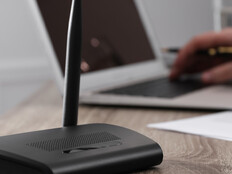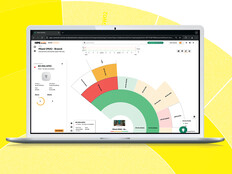Local governments may also be able to increase access through partnerships with educational and other entities.
During the COVID-19 pandemic, school districts in Alabama, southern Illinois and other areas parked school buses outfitted with mobile access routers outside of apartment complexes and other residential areas that had inadequate internet access to provide connectivity coverage.
The Wi-Fi hotspots allowed students to attend class virtually and access learning platforms; a similar structure could potentially also be used to help rural residents tap into local services, employment information and other useful resources.
Other school districts implemented Citizens Broadband Radio Service-enabled platforms during the pandemic, which essentially establish private LTE networks.
After determining the best sites for six antenna installations based on where the most in-need students lived, Pittsburg Community Schools in southeast Kansas, for example, deployed Motorola’s Nitro private LTE solution, which uses the city’s pre-existing fiber-optic cables to deliver high-speed broadband connectivity within the district.
RELATED: How individual states are reducing inequity through broadband expansion.
Municipal Initiatives Could Help Close the Digital Divide
To ensure residents can take advantage of high-speed internet access when it’s available, a number of local governments are spearheading efforts to provide residents with up-to-date, functional devices and acumen.
Chula Vista — a California city with a population of 275,487 where 9.5 percent of residents live below the poverty line, and almost as many (9.3 percent) don’t have a broadband internet subscription — has considered integrating digital literacy training into existing English-language learning curriculum options.
The city also has proposed hosting a Day of Digital Inclusion, which would offer underserved populations that may struggle to utilize resources due to time or transportation constraints a centralized way to learn more about digital equity programs.
EXPLORE: Libraries loan devices to increase digital equity and literacy.
In Philadelphia, only slightly more than half (53 percent) of low-income residents own desktop or laptop computers, and just 4 in 10 have tablets.
The city currently sponsors a program in which residents and businesses can donate computers to be refurbished and given to residents. Through a public-private partnership, the city also provides digital skills programming at public computing centers located in recreation centers, libraries and other venues.
Forty-two percent of Philadelphia residents cited cost as the reason they don’t have broadband service — a particularly prevalent issue in the city’s low-income, senior and Spanish-speaking Hispanic communities, which have the lowest home broadband subscription rates.
Philadelphia’s five-year Digital Equity Plan also includes an initiative to add human touchpoints that can help residents with limited digital abilities access and use technology.
Greater Connectivity May Require More Changes to Ensure Access
As enhanced broadband capabilities help more residents get online across the country, examining data that relates to how public services are being used can help local leadership identify which digital equity challenges are the most urgent priorities.
A number of constituents, for instance, may be using mobile devices to access city or state services. Some aspects of websites that were designed for desktop-based browser viewing may not translate well to a smaller screen; site functionality can also differ based on the type of device being used.
DIVE DEEPER: A look at rural broadband expansion at the state level.
As a result, it’s critical that public sector websites are optimized for use on multiple mobile operating systems, allowing chat applications, forms and other items to be viewed clearly — whether someone is logging on with an iPhone to apply for a license or using a Samsung device to pay a parking ticket.
This article is part of StateTech’s CITizen blog series. Please join the discussion on Twitter by using the #StateLocalIT hashtag.













